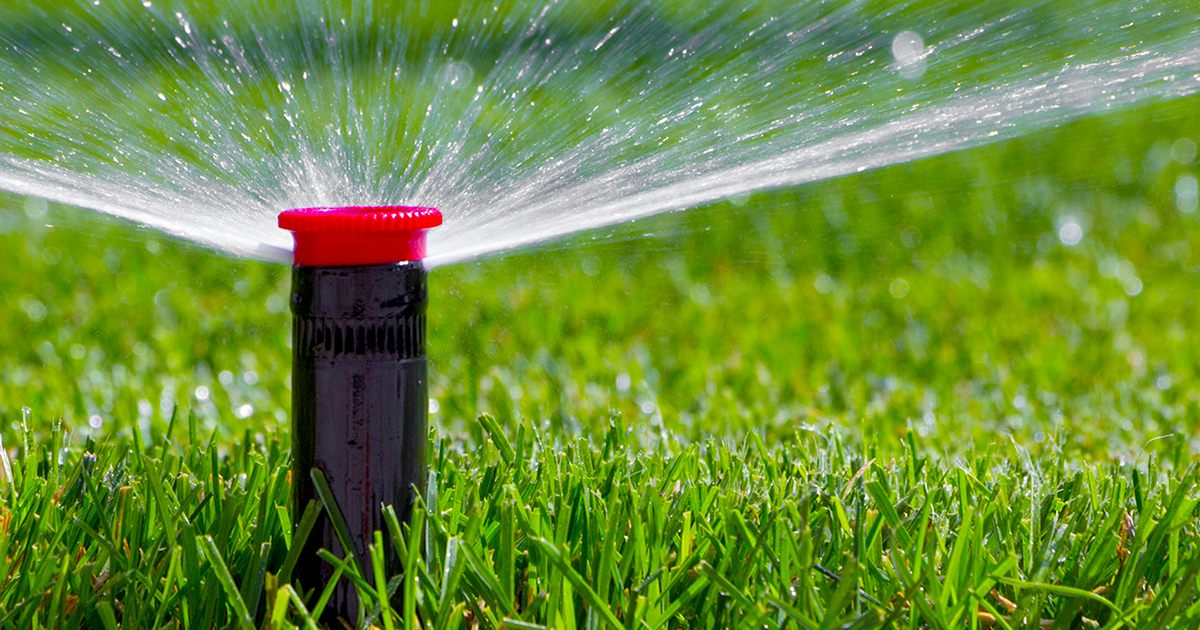
Spring has sprung! If you haven’t already turned on your outdoor water for the season, now is a great time to get the job done.
Chances are good that when you do, you’ll find at least a few problems. According to a study by homeadvisor.com, the average cost to repair a sprinkler system each year is about $250. You can save a lot of money by doing the work yourself, but it can be dirty, time-consuming, and sometimes pretty frustrating.
First, why do sprinkler systems need repairs so often? There are a variety of reasons, and some of them are easier to avoid than others. Here are the most common culprits:
- Dirty, clogged parts
- Freezing weather, which can cause pipes and valves to burst
- UV radiation, which weakens plastic parts over time
- Lawn mowers, which can break sprinkler heads
- Tree roots, which can damage water lines underground
- Critters (especially rodents) that eat through electric lines
Sometimes, sprinkler problems are pretty obvious. Other times, they take a little more sleuthing. This quick troubleshooting guide can give you an idea of how to resolve any problems that come up.
Broken sprinkler heads
If you have a puddle in your lawn, find water spraying in the wrong direction, or see signs of uneven growth in the landscaping, you could have a broken sprinkler head on your hands. These can usually be replaced for $20 or less.
Before you buy replacement parts, make sure the sprinkler head in question is clean and tightly attached. Then, if it's still not working, be sure to write down the specs you find on the top or side of the broken sprinkler head. Heads vary by how they pop up, how they spray, and how much water they deliver at a time. You'll need to get an exact replacement (even if it's a different brand). Worst case scenario, take the broken part into a hardware store and ask for help.
Broken pipes
A bigger problem, but one that may be harder to see, is a broken pipe. You might spot some of the same sogginess in the grass that you’d see from a broken sprinkler head, or you may notice that the ground has become uneven over time due to oversaturation. Other signs include water that comes out dirty, unusual fungi (mushroom) growth, or hissing, bubbling, or gurgling that you can’t identify.
It's also possible that you don’t notice any of these signs but still see a huge spike in your secondary water bill. If you do, take action immediately. If you don’t solve the leak, you could face:
- Sinkhole formation
- Increased flood risk
- Soil leached of needed minerals
- Structural problems caused by standing water
- Dangerous mold and fungi growth
Damaged electrical parts
Automatic sprinklers turn on and off based on signals from the control box to the valve assembly, which then directs water through the appropriate pipes. Sometimes, these electrical parts get damaged by animals or even by the water itself.
If your sprinklers aren’t turning on and off like you’d expect, use this quick guide to troubleshoot your system. And be careful! Water and electricity can be dangerous when mixed.
Faulty valves
If one of your sprinklers keeps running when the rest of the system is turned off, you might have a valve problem. Valves and solenoids are usually housed in the manifold assembly near the main shutoff, but you may have a few different valve boxes on your property depending on its size and the complexity of your system.
You can also spot a valve problem if there’s irregular water pressure or areas that are wetter/drier than others. Look for cracks, rips, or other signs of disrepair in each valve and replace if necessary.
When to call in the sprinkler pros
Sprinkler repair pros often charge between $50 and $100 an hour for labor, but they can save you a lot of time and stress in the long run. We recommend calling for quotes if:
- Your initial fix doesn't work
- You uncover new problems while trying to solve the original problem
- You don’t know much about pipes and wiring
- You don't have the tools to do the job properly
Next fall, you can prevent many problems by properly winterizing your system. In most cases, you will need a pro to come blow out the lines. When they do, it's a good idea to schedule a time for them to come back in the spring to turn everything back on and check for potential repairs.
If you’re shopping for a new home or looking to upgrade your current home, the friendly Loan Officers at Castle & Cooke Mortgage would love to help.


